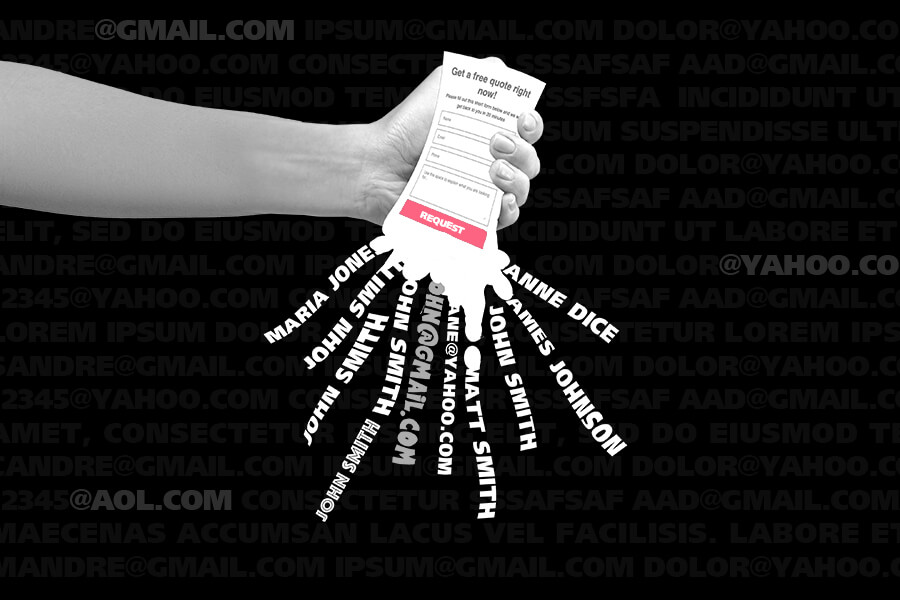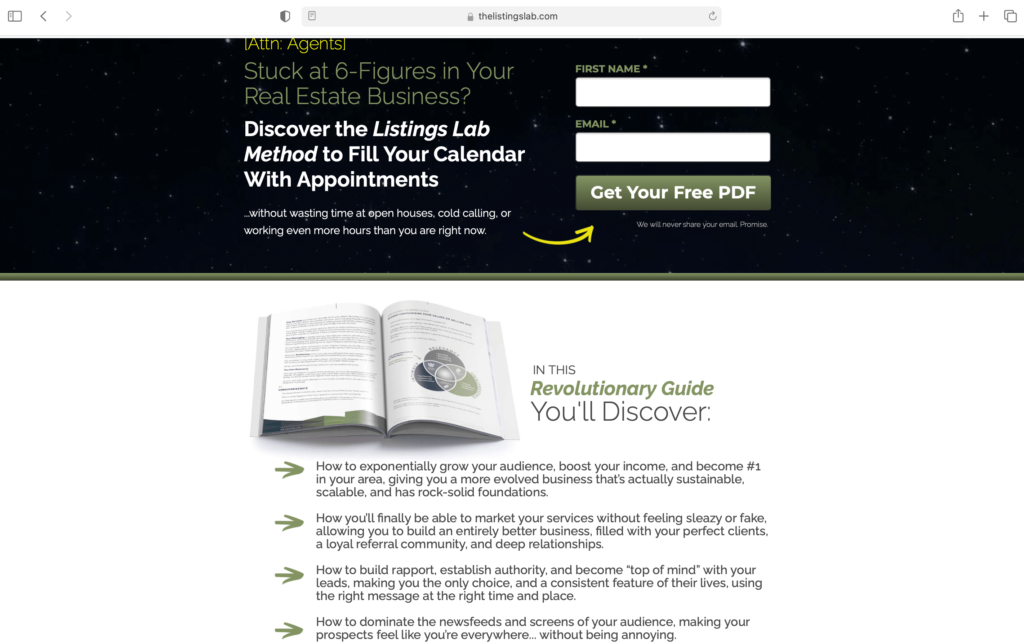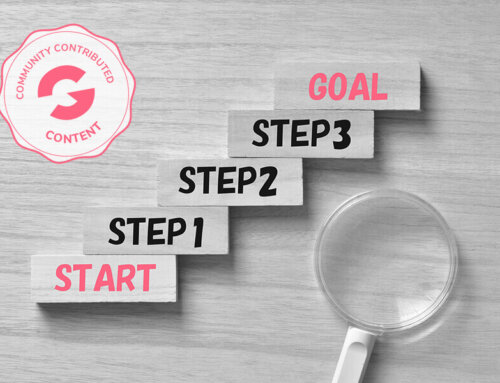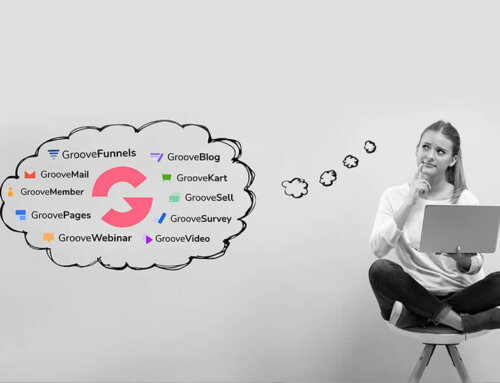In the world of pages and funnels, you’ve probably heard about a squeeze page and then chalked it up to the same thing as a landing page. Turns out, it’s not the same. But to make matters a bit more complicated, a squeeze page is actually a landing page.
Yes, we know, it’s all very confusing… along with all the other technical jargon in the online marketing world. But it really doesn’t have to be, and that’s why we’re going to break down the purpose and the use for these two types of website pages.
Squeeze Page vs Landing Page
Squeeze pages and landing pages are equally important pages to utilize when building out a website. They are an essential part of running an online business and executing a successful internet marketing campaign. And that’s largely because you can better target your audience and directly convert when you use the right type of page. It’s simple, really. You want to use the most effective medium to deliver your message.
So, although it’s just terminology, it’s something that you certainly want to take a moment to fully understand. And the distinction can be very difficult, even for some seasoned experts, since they both serve the same purpose: Capturing user information.
Both pages focus on getting users to fill out a form to collect their name and email addresses, but a landing page will have different elements that provide further explanation on product information, whereas a squeeze page is more laser-focused on capturing the user information. So, while all squeeze pages are landing pages, not all landing pages are squeeze pages.
What is the Purpose of a Squeeze Page?
If you want to create a page for your website that focuses on a single offer, then a squeeze page is probably right for you. It’s most often the first page that a visitor lands on, after clicking on your ad.
In terms of content, a squeeze page is best when it presents as clean, clear, and concise. The simpler the better, if you will. It has to have a consistent look and feel to the rest of your brand, such as easily identifiable colors and logo, but the page itself mustn’t have any long-form content or even additional links – because that will all distract and potentially redirect visitors away from your page.
You want to make sure, from a user-experience perspective, that a visitor would feel almost immediately compelled to input their name and email address into the page form. Harder than it sounds, we know. But that is the main objective of a squeeze page, to “squeeze” or solicit email addresses from prospective clients.
The most common way of doing so, is by offering a freebie in exchange for something of a high perceived value, like for example, an ebook. The freebie itself should speak to a pain point that you already know your target audience has, which your product/business can ultimately solve when you retarget them in future campaigns.
The purpose of a squeeze page is to “squeeze” information from the visitor, but why? In order to add them as a contact to your email list. A well-designed squeeze page is an integral part of a good list building and lead generation strategy.
A squeeze page is very similar to a landing page in design principles, as both must have an enticing header and a strong call-to-action. But the difference lies in the copy. On a squeeze page, there’s usually just a few, short bullet points. The copy is more tight and direct.
A squeeze page also has no additional distractions, such as menu navigation options or links, to improve the chances of the visitor completing the opt-in form. Take a look and click through to this web page that successfully follows the textbook formula for a high-converting squeeze page:
What Can I Expect From a Squeeze Page?
Assuming that you’re new to digital marketing, you might be surprised to find that the average conversion rate of a squeeze page is around 2%.
Don’t let that figure discourage you, as a mere 2% can still be mighty effective if you have a stellar funnel to nurture your leads and close sales. There are also some tips and tricks that will help you optimize your funnel and increase your conversion rate, as the top squeeze page strategies have a conversion rate of 3-5 times the average. We’ll list some of those tips at the end!
Another useful thing to keep in mind is that it truly isn’t always about quantity. Yes, naturally, you’ll want to have as many people opt-in to subscribe to your list but more accurately, you want as many of your ideal customers to opt-in.
Numbers aren’t the only objective, so direct some of your focus towards optimizing your content and that will increase your chances of quality conversions – which will lead to better qualified prospects in your funnel. Every marketers dream!
Why Use a Squeeze Page?
As a business, you have certain business objectives that you will want to achieve in your marketing efforts. Adding a squeeze page to your website will:
- Attract potential customers to your website
- Add contacts to your email list
- Convert website visitors into paying customers
A squeeze page as well as a landing page can achieve all three of those objectives, but if you mainly want to collect names and email addresses for future campaigns, a squeeze page is the best. But if you wanted to build a page to make a sale, then a landing page would be best suited.
How Do I Best Optimize My Squeeze Page?
The quickest way to create a high-performing squeeze page is to replicate an already existing one! Rest assured, we’re not encouraging you to blatantly copy and steal intellectual property, but there’s nothing stopping you from using other pages as inspiration for your own.
Reverse engineer the process. Take a look at the individual elements on the page, the headline, the images, the font, the copy, the design, and adapt those elements by tweaking them to suit your own squeeze page.
You should also pay attention to:
- The headline. Make sure that you have an attention-grabbing headline, and also make sure that the image complements the headline.
- The sub-headline. Leverage social proof and talk about the value proposition to draw readers in.
- The copy. Avoid redundancy by keeping the copy crisp and short. Make use of bullet points.
- The CTA button. Both the button color and copy are important. Make sure the color is contrasting to the page and that the copy is exciting!
***
In summary, a squeeze page and a landing page are similar in design principles as well as use, but a squeeze page has slightly different elements to more directly capture user information. This can be confusing, but ultimately it’s about selecting the most appropriate page for the highest possible conversion. There are also additional steps you can take to increase your conversion rate from the average 2%.
If you want visitors to only focus on exchanging their information for a single product offering, usually a freebie, then a squeeze page is the best choice between the two page types.






Leave A Comment